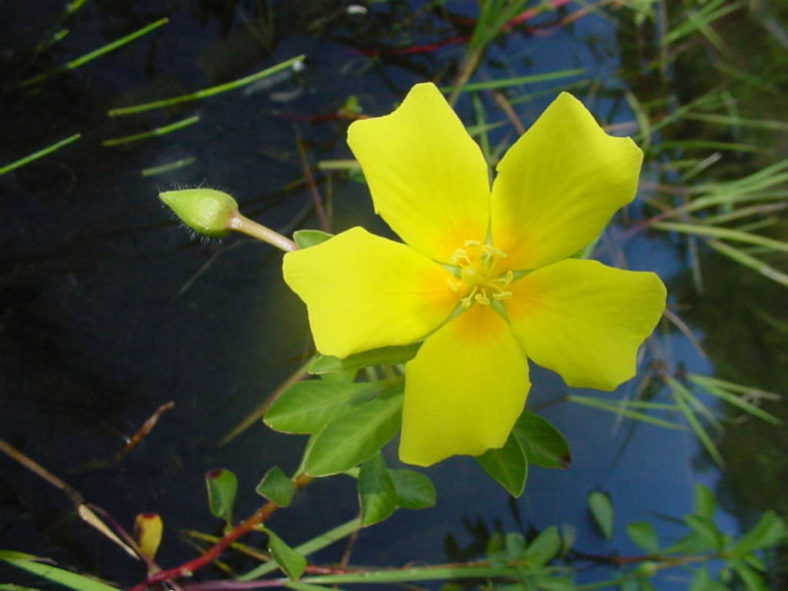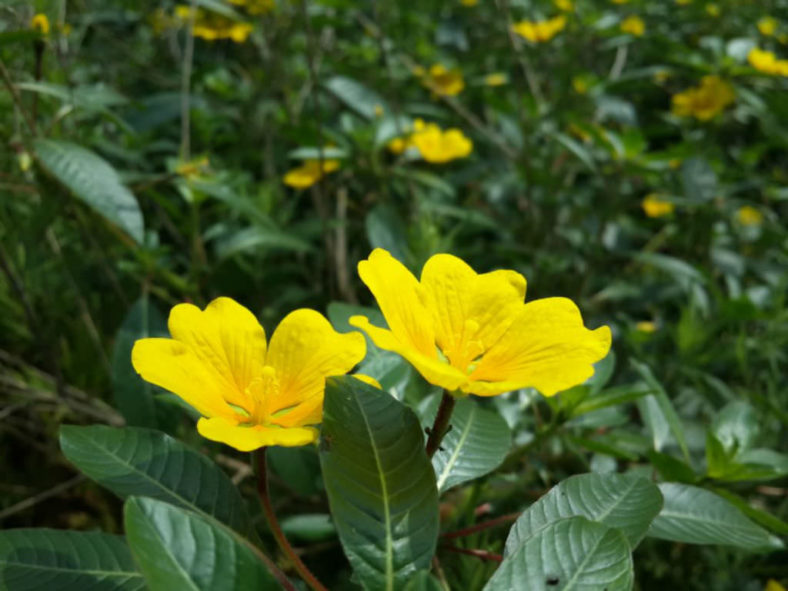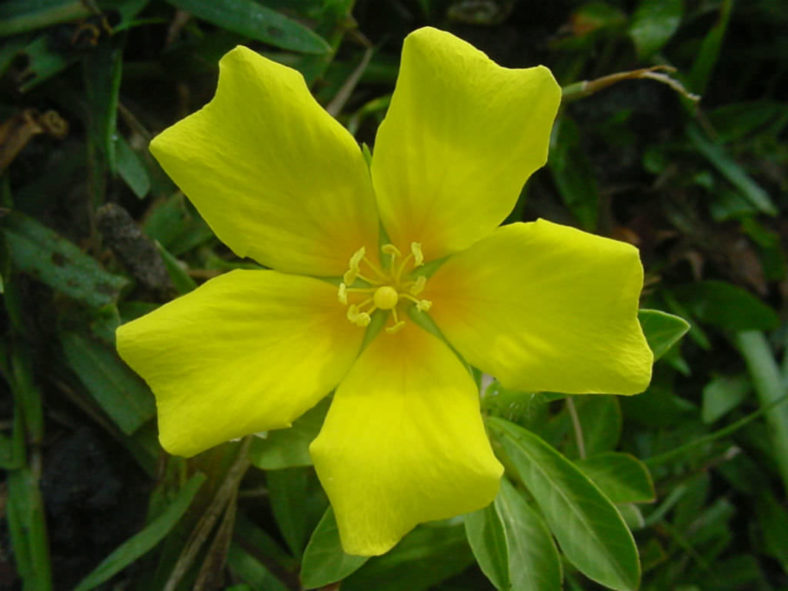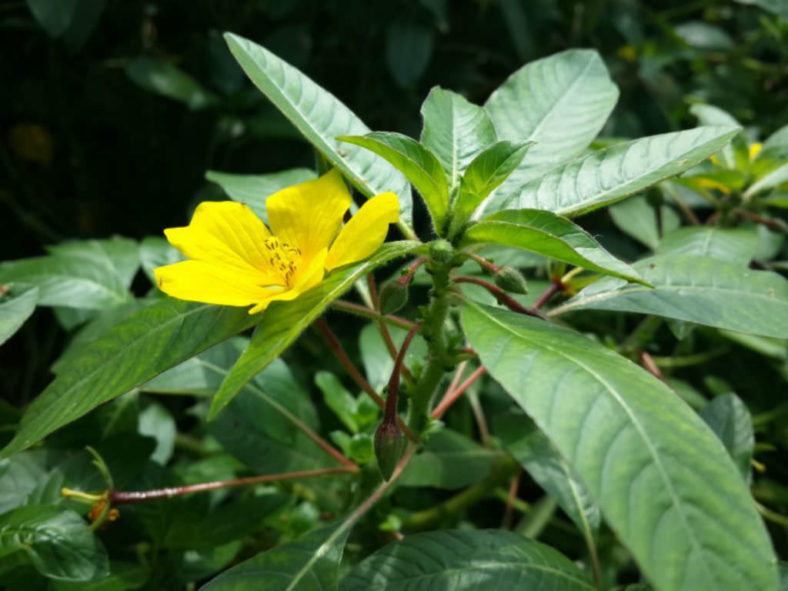Scientific Name
Ludwigia peploides (Kunth) P.H.Raven
Common Name(s)
Floating Primrose-willow, Creeping Water Primrose
Synonym(s)
Ludwigia peploides subsp. peploides, Jussiaea californica, Jussiaea diffusa var. californica, Jussiaea fluitans, Jussiaea gomezii, Jussiaea patibilcensis, Jussiaea peploides, Jussiaea polygonoides, Jussiaea ramulosa, Jussiaea repens var. peploides, Ludwigia adscendens var. peploides, Ludwigia clavellina var. peploides, Ludwigia diffusa var. californica, Ludwigia ramulosa
Scientific Classification
Family: Onagraceae
Genus: Ludwigia
Flower
Color: Yellow
Bloom Time: Late spring to early fall
Description
Ludwigia peploides is a perennial herb that grows in moist, wet or flooded areas. The stem can creep over 6.7 feet (2 m) long, sometimes branching. It spreads to form mats on the mud or floats ascending in the water. Leaves are up to 3 inches (7.5 cm) long and are borne in alternately arranged clusters along the stem.
The flowers have 5 to 6 lance-shaped sepals beneath a corolla of 5 or 6 bright yellow petals up to 1 inch (2.5 cm) long. The blooming period occurs from late spring to early fall, lasting several months. Fruits are hard cylindrical capsules.

How to Grow and Care
This floating Ludwigia is native to Central and South America, where it can be found growing in stagnant waters as well as in sections of riverine environments that are free of the current. It is a very common pond plant in warm climates or ponds in conservatories. Cultivation in an aquarium is a bit more complicated.
Above all else, this floating stem plant requires light. Even values in the higher range of what is possible over a planted aquarium are often not enough. Outdoor culture in a well-lit pond or tub is sometimes the only way to achieve satisfactory growth with this species. Heavy fertilization with macronutrients and micronutrients is essential (if enough light is available) to produce attractive growth. Yellow flowers form on the floating rosettes if the plant is achieving good growth.
Winter hardy to USDA Zone 10. In St. Louis, grow as an annual in containers covered with 6 to 18 inches (15 to 45 cm) of water in full sun to part shade. Plants can be difficult to overwinter indoors.
Although the usefulness of this species in the aquascape is markedly limited, its beautiful circles of reddish foliage can lend a unique texture to outdoor ponds.
See more at How to Grow and Care for Mosaic Plant (Ludwigia sedoides).
Origin
Ludwigia peploides is native to many parts of the Americas but can be found on many continents and spreads easily to become naturalized.
Links
- Back to genus Ludwigia
- Plantpedia: Browse flowering plants by Scientific Name, Common Name, Genus, Family, USDA Hardiness Zone, or Origin
Photo Gallery
Click on a photo to see a larger version.




